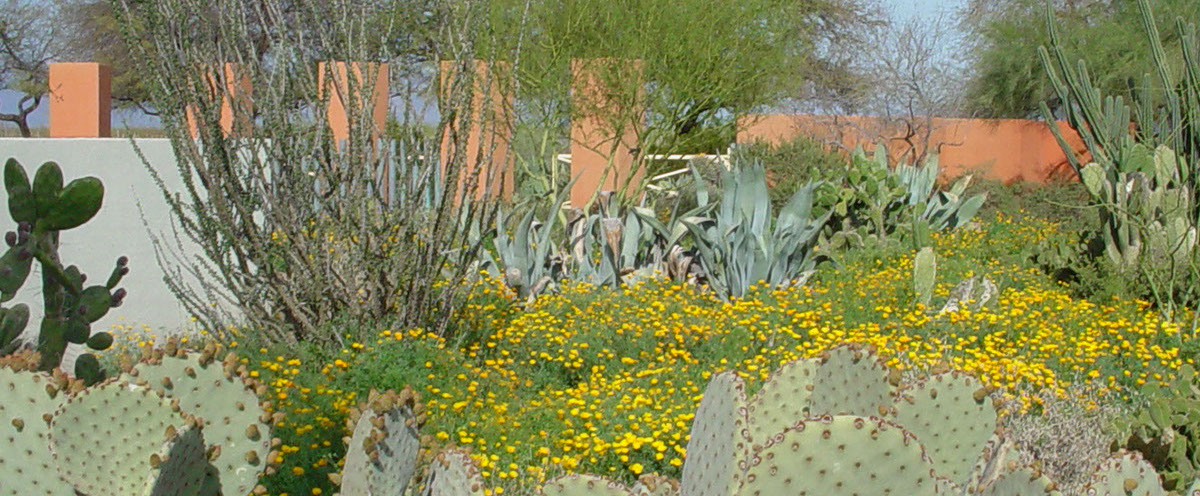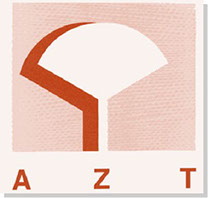


Arboreal Schizophrenia
EDITOR’S NOTE from AZT: In response to numerous questions about why Arid Zone Trees has, thus far, elected not to produce grafted desert trees species we offer the following article originally published in the Journal of the International Society of Arboriculture. While we continue our own experimentation, in the absence of credible research or long term study of grafting in desert tree species, we remain skeptical of this practice. Arid Zone Times would like to thank Peggy Currid, Managing Editor, Arborist News Magazine, International Society of Arboriculture, and the author Professor John Ball of South Dakota State University for their permission to re-print this article.
Arboreal Schizophrenia
By John Ball, Professor of Forestry and the Forest Health Specialist at South Dakota
Ornamental trees endure many stresses in the urban landscape. Some of these stresses, such as night lighting, are unique to the urban environment and do not have any close natural counterparts, which makes such stresses particularly troublesome to detect and mitigate. While arborists are familiar with many of these stresses, there is one that probably is rarely considered: Our urban trees suffer from a split personality.
Arborists often are guilty of considering only the “top” of the tree when diagnosing problems. The leaves (or lack of them) and the condition of branches and trunk are evaluated, but sometimes we forget that part of the tree is beneath us, and that portion requires evaluation as well.
The first step in any diagnostic process is identifying the species. Simple, you say: If the top is a white ash (Fraxinus americana), the roots must be as well. Wrong. And here is where the split personality problems begin.
One glaring example of the perceived non-importance of roots is the fact that rarely can we identify the “bottom” of ornamental trees. Most ornamental trees are actually two trees: The trunk and canopy are one species; the roots another. These trees are cultivars—a group of cultivated plants distinguishable from other plants of the same species by any characteristic and that retain the characteristic through propagation. Two common cultivars found in the urban landscape are Autumn Purple white ash (F. americana ‘Autumn Purple’), known for its outstanding deep purple fall color; and October Glory red maple (Acer rubrum ‘October Glory’), selected for its crimson-red fall color.
Cultivar trees are propagated by a grafting technique called budding. A single bud taken from the desired cultivar is nestled within a fold made on the lower stem of a seedling. Once the bud begins to expand the following spring, the seedling stem above that point is pruned away. The initial sideward growth ensuing from this single bud results in a slight stem crook that remains visible for several years or longer. (NOTE: If you cannot see the crook, there is a good chance the tree has been planted too deeply.) The top of the tree, referred to as the scion, originates from this single bud—a bud taken from a specific cultivar, a tree with known characteristics. The bottom, the root stock or under stock, is beneath the scion and consists of the lower few inches of the stem and the entire root system. The origin of it is usually a mystery. You’re never sure of the characteristics of the root stock. Sometimes you are not even sure of the species.
When you plant an Autumn Purple white ash, you probably are placing a green ash (Fraxinus pennsylvanica) in the ground. Most white ash cultivars have been budded onto green ash root stock. Green ash commonly is used as the root stock for many ash species, including European ash (F. excelsior), white ash, and black ash (F. nigra). Green ash is so often used as the root stock for these other species that it might even be referred to as a “universal donor.”
Grafting two different trees together does not always work. Grafting between species within the same genus, such as white ash on green ash, works for a number of genera. Grafting between species of different genera, but within the same family, is possible only for a limited number of species. One bi-generic combination occasionally seen in the landscape is Mountain Ash (Sorbus ¥ hybrida) on hawthorn (Crategus monogyna) root stock. Sometimes a homeowner is surprised to find thorns coming from his or her mountainash. The thorns are not coming from the mountain ash, of course. Rather, the hawthorn root stock has suckered and those stems have thorns.
A number of anatomical, biochemical, and physiological barriers prevent successful grafting between different families—for example, an oak (Fagaceace) on a maple (Aceraceae). These barriers exist even for most bi-generic combinations. Bradford pear (Pyrus calleryana ‘Bradford’) budded onto common pear (P. communis) often will fail.
Also, there are well-documented cases of graft incompatibility when the scion and root stock are of the same species but from different plants. Red maple (Acer rubrum) and Freeman maple (Acer ¥ freemanii) cultivars probably are the best examples of this problem, though the problem also occurs with oaks (Quercus spp.).
Graft incompatibility can be expressed as delayed incompatibility in which the failure of the graft does not occur until five to ten years after budding, when the tree is no longer in the nursery but in the landscape. It is not hard to find maple trees at 3 or 4 inches in diameter that died from delayed incompatibility. The symptoms of incompatibility are premature (and often spectacular) fall color, dieback, and eventual death—with the death sometimes occurring as the tree snaps off at about 3 inches (the height of the bud union).
The delayed incompatibility problem is not limited to maples and oaks. It can occur in conifers as well. Yews (Taxus spp.) sometimes die from incompatibility problems years after planting, as can Douglas-fir (Pseudotsuga menziesii). Delayed incompatibility is more common on grafts between species within a genus. For example, Bradford pear on common pear root stock may fail several years after planting.
The problem of incompatibility cannot be fixed once the tree is in the landscape. The solution is back at the nursery. Therefore, it is best to consider planting species such as red maple, where delayed incompatibility is a major concern, on their own roots. Many nurseries propagate these trees as cuttings so that the tree is on its own roots and have identified them as such in their catalogs.
Even when the grafting is successful, problems can occur. With the mountainash— hawthorn combination, the different characteristics of the scion and root stock sometimes become apparent. This problem is common with crabapples (Malus spp.). Crabapples are a popular ornamental, with numerous cultivars selected for their form, flower, fruit, or resistance to disease. Most crabapple cultivars are budded onto apple or crabapple seedlings. These root stocks frequently send up suckers that can grow extremely fast and, if not removed, can outgrow the cultivar within a few years. Sometimes homeowners are reluctant to remove these small suckers; they like the idea of developing a multi-stemmed tree.
Have you ever had a client remark that when his or her crabapple was young, it had pink flowers and small yellow fruit, but now it produces white flowers and large, red, mushy fruit? The tree did not change, but the apple root stock out competed the crabapple cultivar. If you look in the center of these clumped crabapples, you’ll sometimes find the stunted—but still living—cultivar.
The solution in such cases is to remove the young suckers that sprout from the root stock. Some root stocks sucker profusely; therefore, you may have to perform this procedure annually. You can reduce the number of suckers by delaying pruning until just after the leaves have completely expanded. Pruning during the dormant season invigorates sucker production no differently than renewal pruning of shrubs in late winter results in an abundance of new shoots. Products such as Sucker Stopper™ can be sprayed onto the fresh cut to retard the development of suckers.
Root stock does not always end 2 to 3 inches above ground. Many weeping forms of trees, such as tabletop elm (Ulmus glabra ‘Pendula’) (Figure 3) and weeping mulberry
(Morus alba ‘Pendula’), are budded onto a root stock about 5 to 6 feet above ground. Any buds that form on the root stock of such trees must promptly be removed; these quickly growing buds can shade out the weeping cultivar as they grow.
Ornamental trees endure a number of unique stresses in the urban landscape. The split personality problem is one not shared by their forest cousins. While it is not a major stress, it is probably one of the more unusual ones. When you’re examining a tree, don’t assume the “top” and “bottom” are always the same.
John Ball is a professor of forestry and the forest health specialist at South Dakota State University in Brookings, South Dakota. His e-mail address is john_ball@sdstate.edu . Photos courtesy of John Ball.

© Copyright 2000-2020 Arid Zone Trees